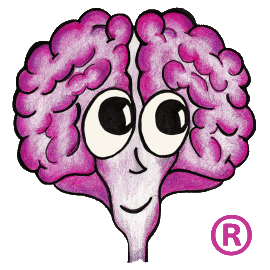TechDoc has two separate functional areas: the Document Manager and the Search Manager.
Document maintainers use a web browser to connect to the desired document manager where they perform operations on their documents (Create, Reserve/Replace, Release). The Document Manager has a Windows Explorer like interface with folders and documents to allow for the hierarchical organization of their documents.
- Documents can be organized in cabinets by project, organization, document types, etc.
- Document Manager provides the capability for users to create subfolders to better organize the documents within their work area.
- Full Document Lifecycle
- Creation Process
- Create document using familiar tools (outside the TechDoc System)
- Enter document into Document Manager. It has the capability to store any electronic file type, such as audio, video, not just traditional documents (Word, Excel, PowerPoint, PDF, iGrafx Pro, etc.)
- Create list(s) (access,commenters, notification, distribution)
- Request comments. Commenters may post text comments with optional attachments
- Document Modification
- Checking document in and out (reserve and replace)
- Review Process
- Review Document - create review (serial or parallel)
- Evaluate Document - threaded discussions with optional attachments, voting, and approval
- Release document - electronic distribution
- Document is stamped "Released"
- Watermarked PDF file is created if desired
- Creation Process
- Create and Associate Lists to the folder or document as to who can read, write, or modify documents
- User receives notification when document is modified
- User on distribution list is notified when document is released
- Remote users can be added to Distribution/Notification list by using their SMTP address
- History function tracks all actions that have been performed by a user on a specific folder, document etc.
- Move function allows the user to move the folder or documents from the current cabinet or folder to a new cabinet or folder area
- Reports capability within the Document Manager
- Users can create ad hoc reports and save as CSV, HTML, or XML files
- Users choose columns to show and order by as well as determine selection criteria
- Reports can be saved for execution at a later date
- Search capability within the Document Manager
- Perform a General Search by document number, folder name, list name, user name etc.
- Advance Search provides the option to search on one or more data fields within the folder, document, list or user attributes.
- The Document Manager flexibility allows the System Operator to setup the System Properties to meet individual user group needs
- Provides area for additional data fields to be defined to meet individual user group needs
- TechDoc Administrators can use a web browser to connect to the desired document manager or search manager to perform administrative functions on them.
The software is also configurable to support a large number of environments. Each server can be tailored to meet the requirements of different groups. Security settings, data entry masks, and document organization are just a few of the items that may be changed.
Because the system is designed in a modular fashion using Java, the system can easily be modified, even given a whole new user interface, through programming. TechDoc can even be used as a background engine or API for a new application where document management is only one component of the application's functionality.
The TechDoc System must be available to anyone who has a legitimate need for documents while maintaining an appropriate level of security on each document. The TechDoc System has this Security built in the application beginning at the User Login and continues down to the Document level. The security subsystem was designed for dealing with distributed organizations and the Internet. The system has the concept of individual users with unique usernames/passwords, and groups (Global, Community, Campus, and Local).
As the name implies, the Global group consists of anyone on the Internet who is provided web browser access to the server. The Community group is defined by a set of IP address ranges, which are considered to be part of the logical "Community" for a specific server. The Campus group is defined by a set of IP address ranges, which are considered to be part of the logical "Campus" for a specific server. The Local group is defined as any user who has successfully logged in with a valid username and password from a computer located within the Campus group (or Community group or Global group depending on the server's security settings).
On a per-document basis, access can be granted to individuals and/or groups. This makes it simple to give access, for example, to three specific individuals to update a document but allow anyone in the world to read the document.
Typically, Document Readers will use a web browser to access the centralized search manager, to locate and fetch their documents. Much like using Google ® or Yahoo! ®, the reader is able to retrieve documents without having to know where the documents are actually located. TechDoc's search engine capability allows for multiple document managers to be indexed; thus capturing a broader set of document/corporate knowledge and making it available to the user community. To keep the search manager(s) up to date, whenever a document is created, modified, released, or deleted, an update is automatically sent to the appropriate search manager(s).
- Search Manager provides a simple interface for casual readers to locate and retrieve documents.
- Search Manager has document metatdata and full text searching.
- Search Manager has the capability to manage one or multiple Document Managers.
- Search Manager retrieves results from the Document Manager(s).
- Search Manager simplifies search and retrieval of multiple document managers thus eliminating the need to remember or bookmark all the individual Document Manager Systems.
- Search Manager features:
- Searching by text, document number, keywords (user metadata), etc.
- Viewing document attributes.
- Document Retrieval: retrieve any generation, which can be a draft or released (PDF) version of the document.
